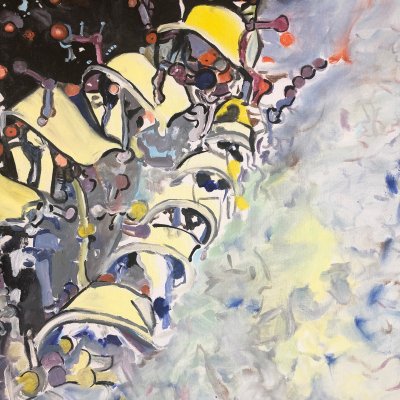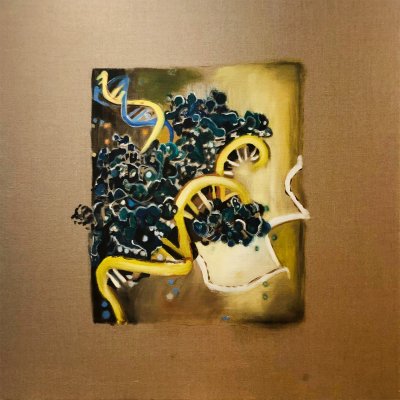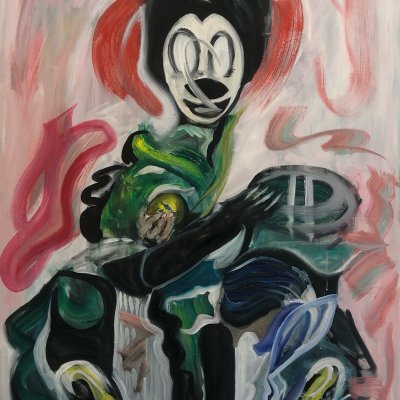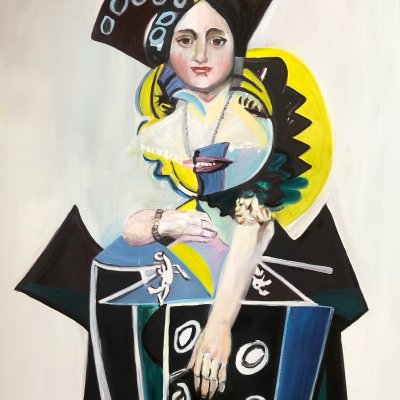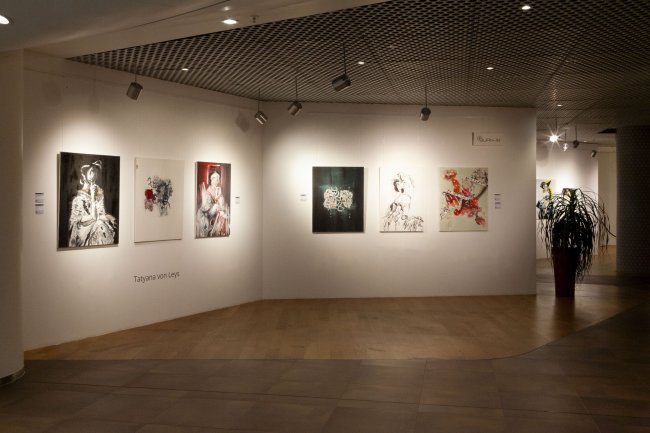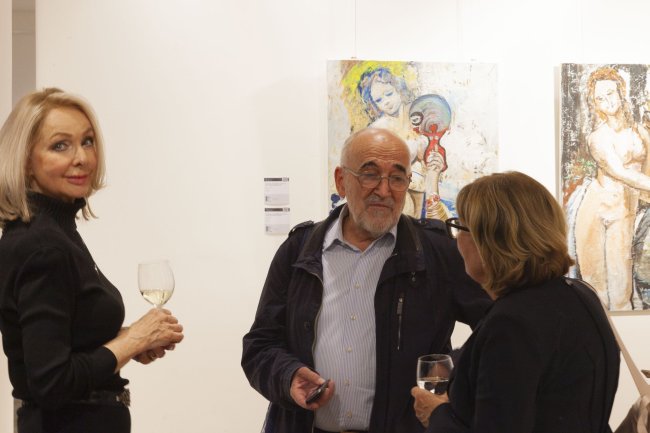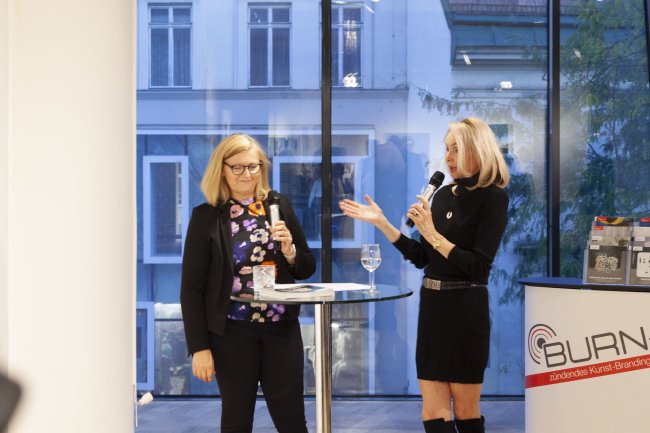Posthumanism enables us
to go beyond the dichotomies of man and machine,
nature and culture.Donna Haraway, science theorist and author of Cyborg Manifesto
Tatyana von Leys (artist | author | cosmopolitan) creates a symbiotic unity of art, science and philosophy in the BURN-IN exhibition BETWEEN CELLS AND TIMES. In this captivating triad, a profound discourse on the future possibilities of being human unfolds. Let yourself be carried away into a world in which the transience of time and the eternity of being merge in a powerful field of tension.
In a world that is increasingly characterized by technological achievements and scientific discoveries, the artist Tatyana von Leys stands on the threshold between past and future, between the natural and the artificial, between the human and the posthuman with her exhibition BETWEEN CELLS AND TIMES. Her works are both artistically compelling and profound reflections on the transformation of human thought and being in an era characterized by the fusion of man and machine.
The MolecularART series masterfully blurs the boundaries between art and science. Through the use of microscope images and sub-cellular structures, von Ley creates works that at first glance are reminiscent of the precision of scientific illustrations, but at the same time are imbued with a poetic depth that takes the viewer on a journey into the invisibility of matter. All of the works are aesthetically pleasing and inspire reflection on the fundamental building blocks of life and their meaning in the context of a changing world.
In the Posthuman Studies and Non Dualistic Thinking cycles, von Leys initiates a dialog with the tradition of art history, referencing portraits by Jean Auguste-Dominique Ingres and Leonardo da Vinci. These historical portraits are transformed into a new, contemporary form through subtle alienation and the integration of modern, molecular structures. The result is a field of tension between preservation and change that addresses the fragility of human existence in the face of technological progress and the changing definition of identity and consciousness. It is this combination of old and new that lends the works a particular depth and resonance.
Von Leys' exploration of transhumanism is reflected throughout the exhibition. Her art questions the boundaries of what it means to be human and asks how far the fusion of man and machine can go without losing the essence of humanity. The works invite the viewer to reflect on the possibilities and dangers of a future in which humans are no longer bound to their biological form. At the same time, there is always a quiet but palpable skepticism towards the hubris of technological progress that could lead humanity into a new, uncertain era.
The small book on new thinking, which also plays a central role in this exhibition, provides the theoretical underpinning for von Leys' artistic works. It reflects on the profound changes brought about by the digital transformation and progress in science and calls for existing thought patterns to be questioned. The exhibition BETWEEN CELLS AND TIMES translates these reflections visually and makes the abstract concepts of the book tangible. Here, the book is understood not only as an accompanying text, but as an integral part of the artistic expression.
In BETWEEN CELLS AND TIMES, Tatyana von Leys succeeds in building a bridge between worlds: between art and science, between past and future, between humans and post-human beings. Her works open up new perspectives on the human condition and invite us to pause in a time of constant change and reflect on the eternal questions that move us all. In a world that is changing ever faster, this exhibition offers a space for reflection in which the passing of time and the permanence of existence enter into a harmonious dialog.
Vernissage
BURN-IN invites you to the exhibition opening on 19. September 2024 6 pm.
Location
BURN-IN Galerie im Gerngross 2. OG | 1070 Wien, Mariahilfer Straße 42-48
#KunstTRANSFER
The future of art in a posthuman world
In his 1970 work Chance and Necessity, the molecular biologist Jacques Monod poses the question, to what extent sociocultural theories can be derived from the self-organization processes of molecules. This approach goes far beyond pure biology and deals with the fundamental questions of human existence: philosophy, ethics and politics. Monod's vision of thinking from the small to the large is reflected in the art of Tatyana von Leys, who links the molecular basis of life with the idea of self-creation and post-human existence.
Von Leys expands Monod's world of thought and shows how humanity is entering a continuous process of self-modification through progress in science and technology. She merges the concepts of GreenART, sustainability and post-humanism into an artistic narrative that takes up both the industrial revolution and genetic engineering as central elements of future cultural development. Her art becomes a reflection on the meaning of nature, culture and technology in a world where traditional boundaries are blurring and new forms of existence are emerging.
In the face of these profound changes, the question arises: what role will art play in a post-human era? In an era characterized by genetic modification and technological integration, von Leys calls for art to be seen as part of a larger, programmable system. A new form of culture in which the human body is no longer the central element, but a mutable component that is constantly being redefined. Her exhibition is an invitation to reflect on the role of art in a transhuman future and to explore a world in which the human is no longer bound to the physical body.









